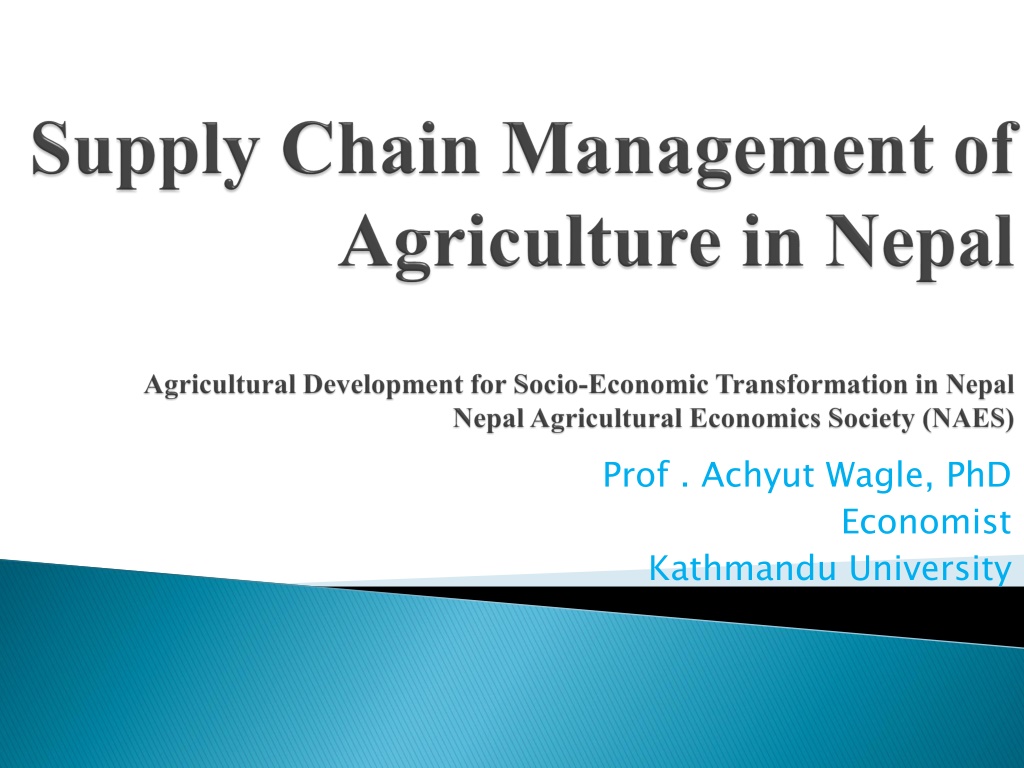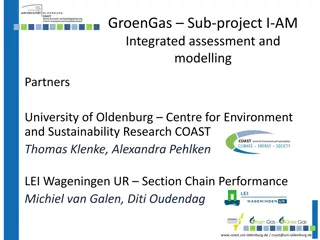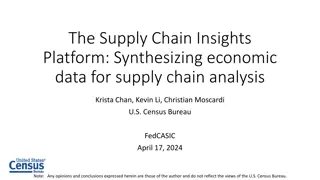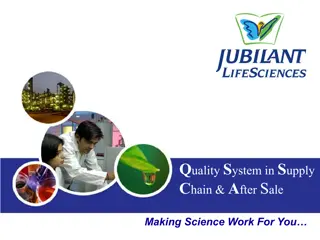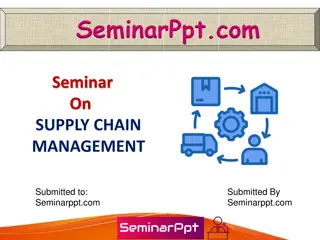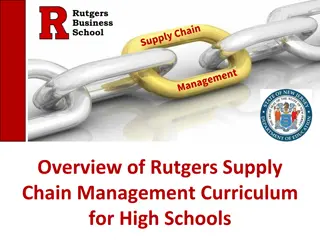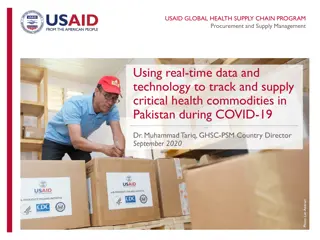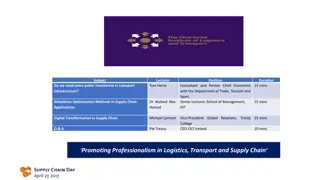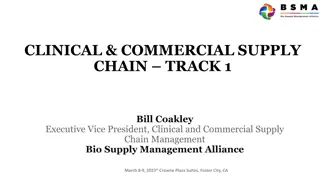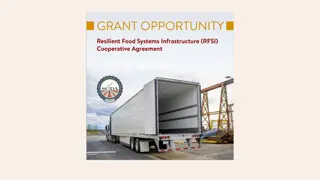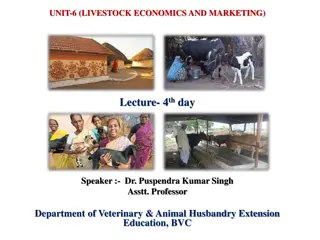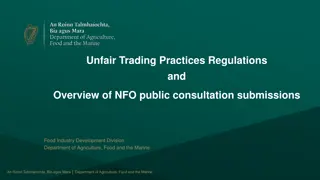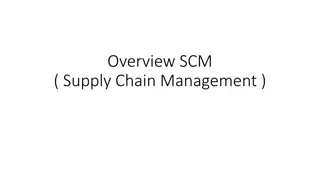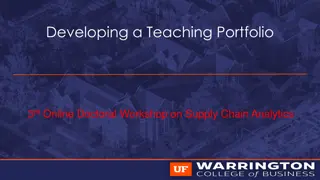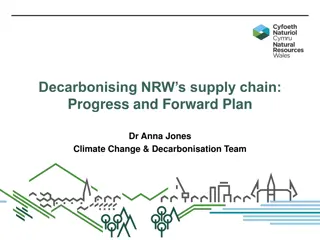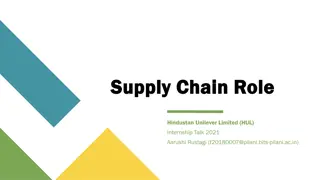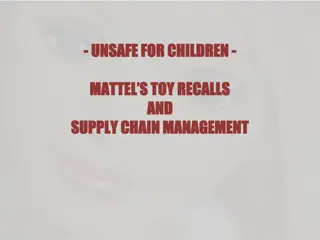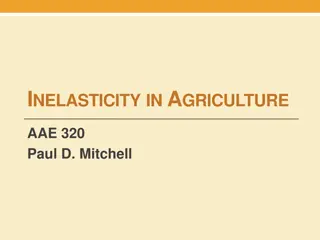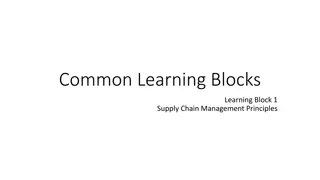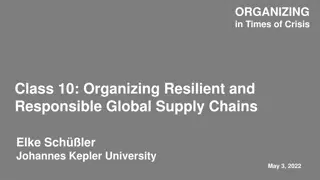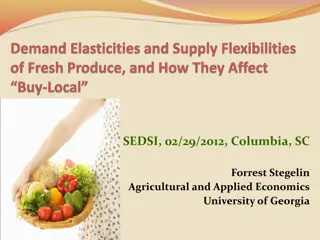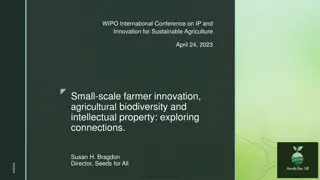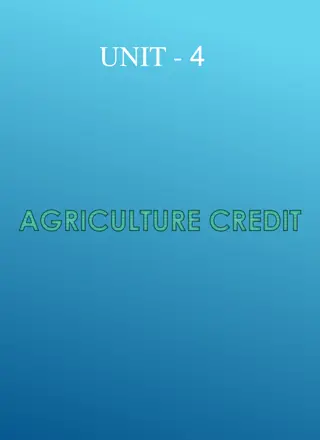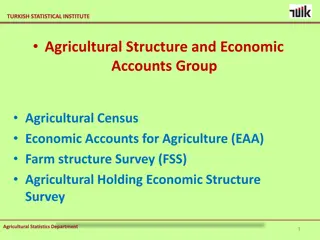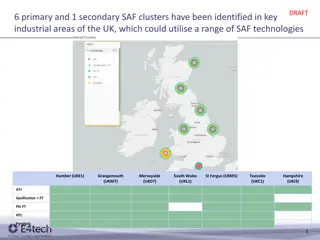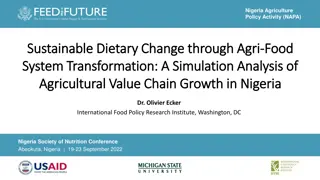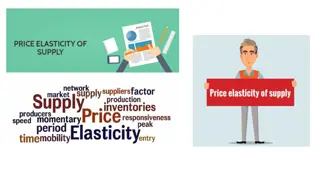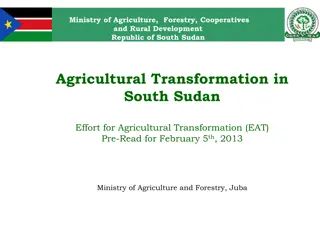Enhancing Nepal's Agricultural Supply Chain for Sustainable Growth
Nepal's agricultural imports, dominated by staples, edible oil, vegetables, fruits, and more, indicate the need to strengthen the agricultural supply chain. Analyzing trade indicators reveals a trade deficit and the importance of optimizing supply chain management. The country's fragmented ASC management across various entities necessitates addressing issues related to input availability, production, processing, distribution, and pricing fairness. Applying supply chain management principles can unlock the sector's full potential and foster collaboration for a competitive advantage.
Download Presentation

Please find below an Image/Link to download the presentation.
The content on the website is provided AS IS for your information and personal use only. It may not be sold, licensed, or shared on other websites without obtaining consent from the author. Download presentation by click this link. If you encounter any issues during the download, it is possible that the publisher has removed the file from their server.
E N D
Presentation Transcript
Prof . Achyut Wagle, PhD Economist Kathmandu University
Of total imports of Rs 839 billion, about one-third of imports is agricutural products. Staples/Cereals 25% (Rice 16%, Maize 5%) Edible oil 26% Vegetables 12% Fruits 10% Fish/Meat/Poultry 7% Dairy 4% Processed products 8% (source: Department of Customs and authors calculation)
S N FY 2077/78 (5 Months) FY 2078/79 (5 Months) Trade Indicators Change (%) 1 Imports (Rs.in `000) 525,498,142 838,408,242 59.55 2 Exports (Rs.in `000) Trade Deficit (Rs.in `000) Total Foreign Trade (Rs.in `000) Imports/Exports Ratio Exports Share to Total Trade (%) Imports Share to Total Trade (%) 50,055,608 102,920,572 105.61 3 475,442,534 735,487,670 54.70 4 575,553,751 941,328,814 63.55 5 10.50 8.15 -22.40 6 8.70 10.93 25.72 7 91.30 89.07 -2.45
1. Agricultural Supply Chain : A wholistic view Agriculture supply chain begin with acquiring modern inputs, sowing and cultivation of agricultural produce, post harvest management, storage and transportation, food processing and agricultural produce. 2. Post-harvest supply Chain 3. Agribusiness Supply Chain Agricultural value Chain 4. Product Specific Supply Chain Sub-supply chains: Staples, Poultry, Meat and fish products, Vegetables, Fruits, Dairy, Pulses, Industrial crops/Related products, Forestry related products distribution, and marketing
Supply Chain Management is a process of integrating various activities associated with efficient flow and transformation of produce from raw material to the end users with all-round information flow to improve supply chain relationships in achieving sustainable competitive advantage. Agriculture can realise its full potential by applying the principles of supply chain management by strengthening collaboration between various exploitative vertical and horizontal integration, market reforms, precision farming, contract farming, demand-led diversification, and the extensive and intensive use of information technology for real-time communication across the chain (Balakrishnan, 2006). stakeholders, non-
Nepals ASC managemnt is highly fragmented across the government (s), cooperatives, corporate houses and MNCs. Availability of inputs-seeds, fertilizers, pesticides Cropping system Production- scales, supply, demand (adequacy, pattern, seasonality) Processing, branding and value addition Phyto-sanitation,/pesticides/quality control issues Distribution and Market Access/layers of intermediries/ middlemen/ Supply adequacy Price fairness-producers, traders and consumers/MSP system has largely failed in paddy, sugercane etc.
Scale and diversification rooted in subsistence, size of land-holding and linked to Information, education and mechanization. Support service mechanisms, lack of coordination among the sub-systems Infrastructure-Production, processing, transportaion, storage and product validation. Land-use planning, irrigation, underuse of the cultivable land, agricultural manpower Limping and herding. Trained and skilled manpower development for agriculture and role of academic institutions
Investment: public, private, FDI, Cooperatives? Agricutural Act Agricultural Supply-chain policy Agricultural Value chain policy Food Supply chain policy liking to food security Monetary Policy: commercial banks to extend at least 15 percent of their total loans to the agriculture, energy, micro, cottage, and medium scale industries. But, actual implmetation of such provisions have been unimpressive/problematic
FITTA 2019: Schedule (Relating to sub-section (2) of Section 3) Industries or Businesses Restricted for Foreign Investment 1. Poultry farming, fisheries, bee-keeping, fruits, vegetables, oil seeds, pulse seeds, milk industry and other sectors of primary agro-production, 2. Cottage and small industries.
Growth rate of paddy production is lower than population growth Lack of manpower, lack of irrigation, storage and market infrastructure Although the area covered by advanced varieties is about 90 percent, lack of quality seeds and farmers' preference to old varieties over new and high yielding varieties. Lack of practices to change the developed seeds and variety of species Increase in use of fine and fragrant rice and lack of diversification in use of food crops Indigenous paddy cannot compete in quality and price of imported paddy. (Source: Dept. of Agriculture) 1. 2. 3. 4. 5. 6.
Identification of problematic nodes in the Supply/Value Chains Use of data/evidences in planning and investment and their use in policy-formulation Farm-land policy, to use the cultivable land Investment policy review to further open it up Market exploration-domestic and international Alloying the crop/price failure risks and sense of farmers insecurity Contingency fund for fertilizer purchase a year in advance Proritizing production, storage and market access in accordance with the changing consumption patterns. Political will and heart on the issue.
